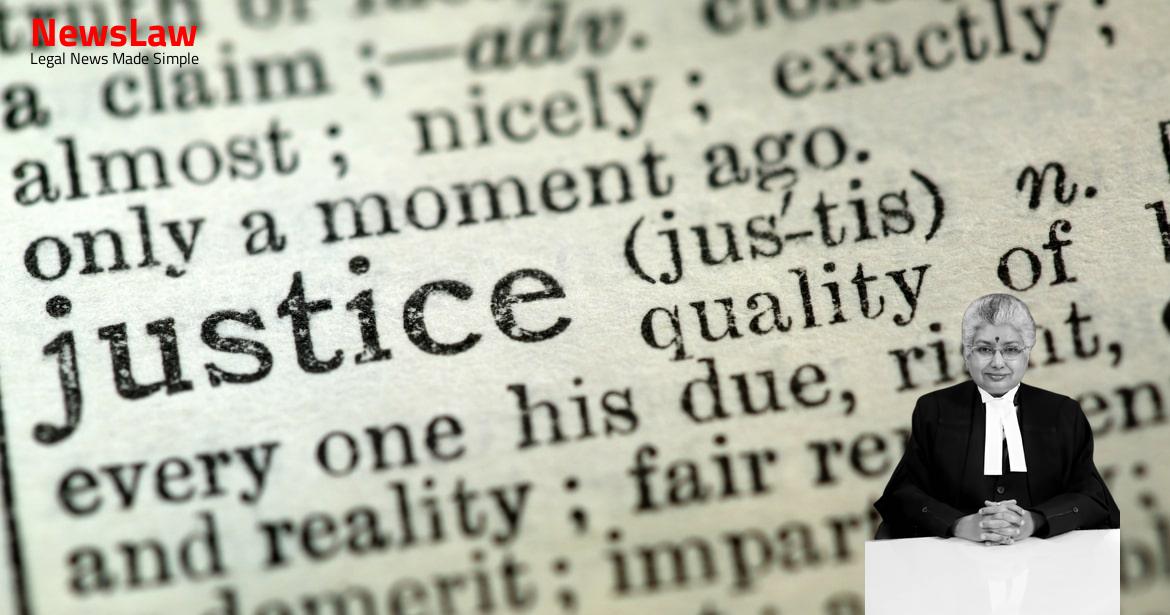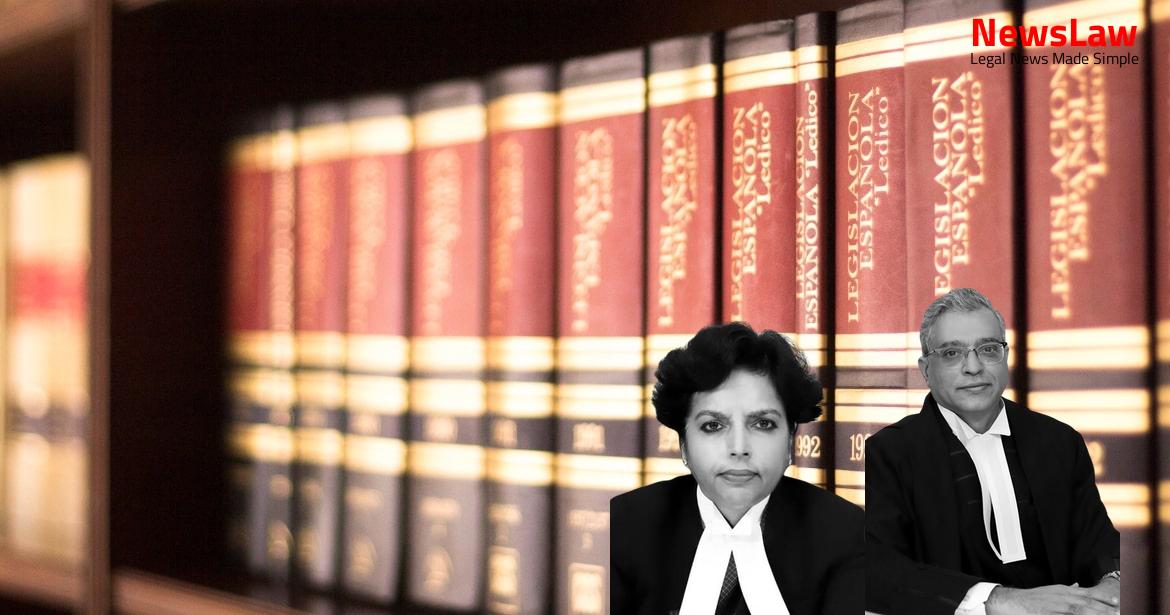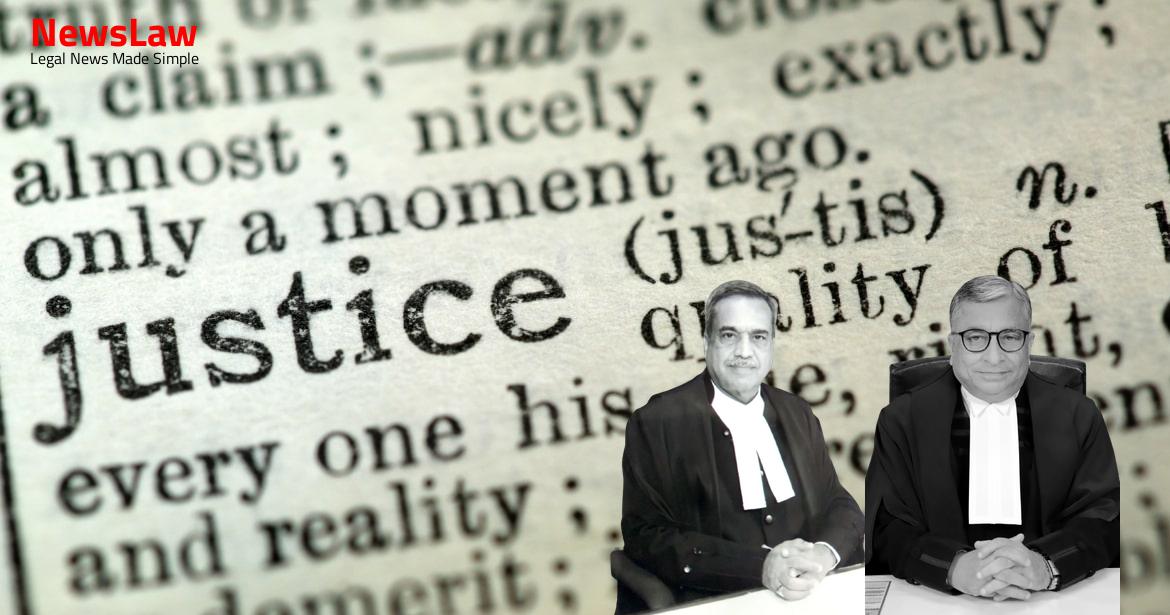Facts
- The body of the deceased was taken to Jhalawar SRG Hospital where he was declared dead.
- A conspiracy to murder the appellant’s son resulted in his death, with a previous attempt on his life in January 2018.
- The first respondent, a constable in the Anti-Corruption Bureau, had close relations with the deceased’s wife, and the deceased had asked him not to visit their house.
- The first respondent was absent during the death and cremation of the appellant’s son.
- The first respondent was allegedly involved in the murder through a special method.
- Various reports and data pointed towards the involvement of the first respondent and other accused parties in the murder.
- (i) The appellant was in custody for two and a half years.
- (ii) Out of seventy-six witnesses, only twenty-five have been examined.
- (iii) There was a delay in lodging the FIR.
- (iv) Initial FSL report did not mention Ketamine use, but police later developed a case around it after four months.
- (v) Co-accused had been granted bail.
Also Read: Electoral Malpractices in Mayor Election
Arguments
- The appellant lodged a written intimation about his son’s unnatural death immediately after the incident.
- A report of unnatural death was registered on 15 February 2018 under Section 174 of the CrPC.
- The FIR was eventually registered on 12 April 2018 at PS Jhalabad Sadar.
- The charge sheet has been filed based on circumstantial evidence indicating the involvement of the first respondent.
- FSL report showed the presence of the drug Ketamine, and earlier reports indicated pulmonary edema likely due to Ketamine administration.
- The seriousness of the crime involving the murder of the appellant’s son, an IB employee, was not properly considered by the High Court.
- The first respondent is a constable with the Anti-Corruption Bureau and tampering with evidence is a concern if granted bail.
- Bail was granted to co-accused Anita Meena due to special circumstances like having an eleven-month-old infant.
- Mr. Siddhartha Dave, representing the first respondent, argues that there is no material on record to implicate the first respondent at this stage of considering bail.
- He mentions that the prosecution’s case relies on circumstantial evidence.
- The recovery of a diary from a co-accused regarding the alleged handover of Ketamine vial would not be admissible as evidence against the first respondent.
- Mr. Dave points out that recoveries made over six months after the incident and after the first respondent’s arrest, from a public place, should not be considered significant.
Also Read: Balancing Power and Transparency: Electoral Bonds Struck Down, Disclosure Mandated
Analysis
- The FIR contains specific allegations against the first respondent regarding his proximity to the deceased’s wife and the deceased objecting to the first respondent visiting their marital home.
- Initial FSL report did not mention Ketamine presence, but a subsequent report indicated its presence, questioning the delayed emergence of this fact.
- Chotmal Kashyap’s statement under Section 161 of the CrPC did not disclose the last sighting of the deceased and the first respondent together.
- High likelihood of evidence tampering and witness influence due to the first respondent’s position in the Anti-Corruption Bureau.
- The post-mortem report indicated pending histopathological examination for determining the cause of death.
- The material emerging during investigation should not be ignored.
- The first respondent cannot claim parity with the co-accused due to his prominent role in the murder as per the FIR and investigation findings.
- Infirmities in the High Court’s bail order which granted bail to co-accused Anita Meena based on having a child in jail.
- The delay in lodging the FIR has been noted by the High Court.
- The power of the court to interfere with an order of bail has been discussed.
- The principles regarding granting bail and focusing on the role of the accused in deciding parity have been reiterated.
- Considerations that govern the grant of bail have been listed without attributing an exhaustive character to them.
- High Court erred in allowing the application for bail
- Consideration of witnesses, seriousness of the crime, role of respondent, and likelihood of evidence tampering necessary
- Inappropriate for High Court to surmise police had ‘developed a case’ after four months
Also Read: Recall of Resolution Plan Approval: Legal Analysis
Decision
- The observations made in this judgment are solely for the present case and will not affect the final outcome.
- The appeal has been allowed, and the High Court’s order granting bail to the first respondent has been set aside.
- As a result, the first respondent must surrender immediately and be taken into custody.
- Any pending applications have been disposed of.
Case Title: SHRI MAHADEV MEENA Vs. PRAVEEN RATHORE (2021 INSC 548)
Case Number: Crl.A. No.-001089-001089 / 2021



